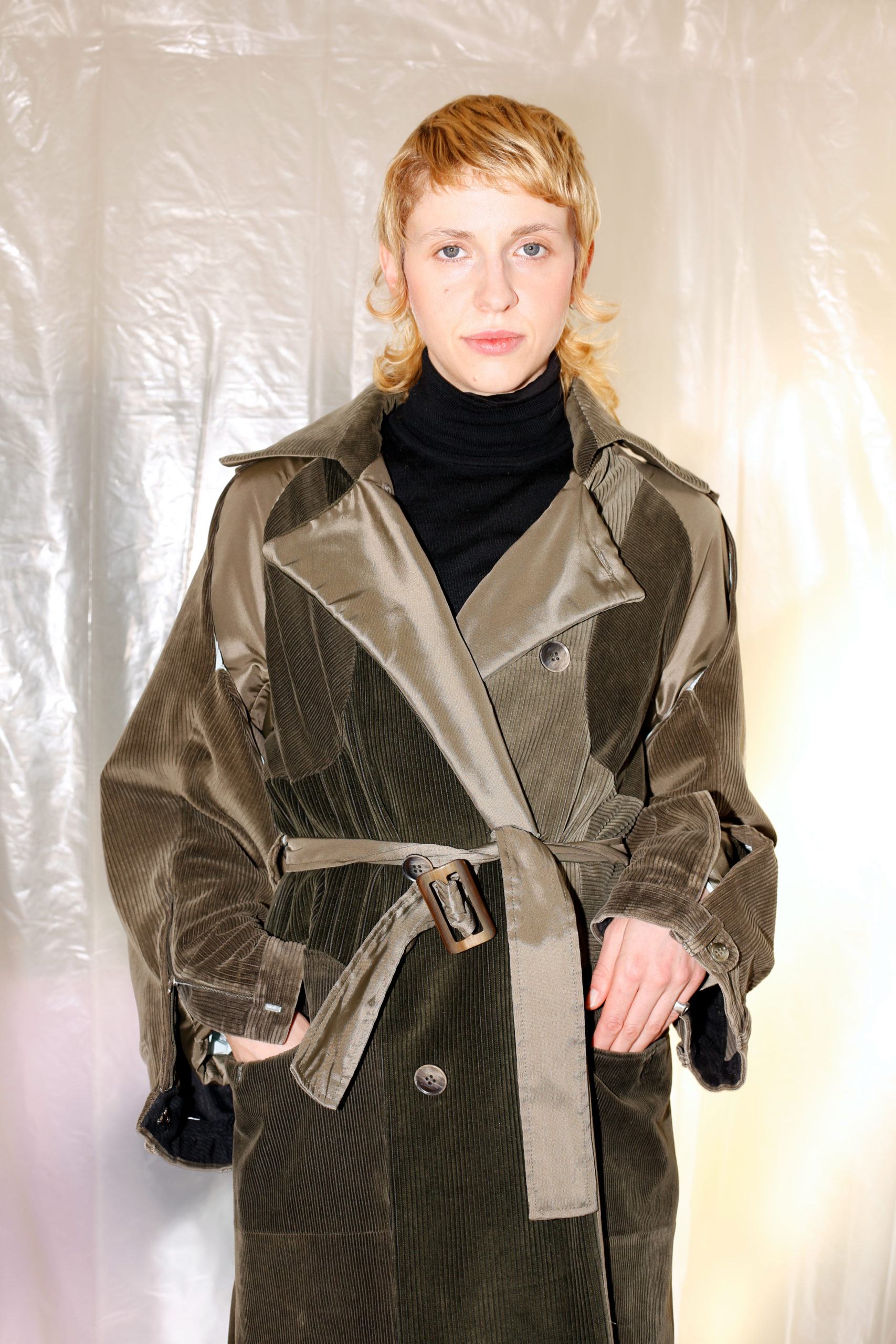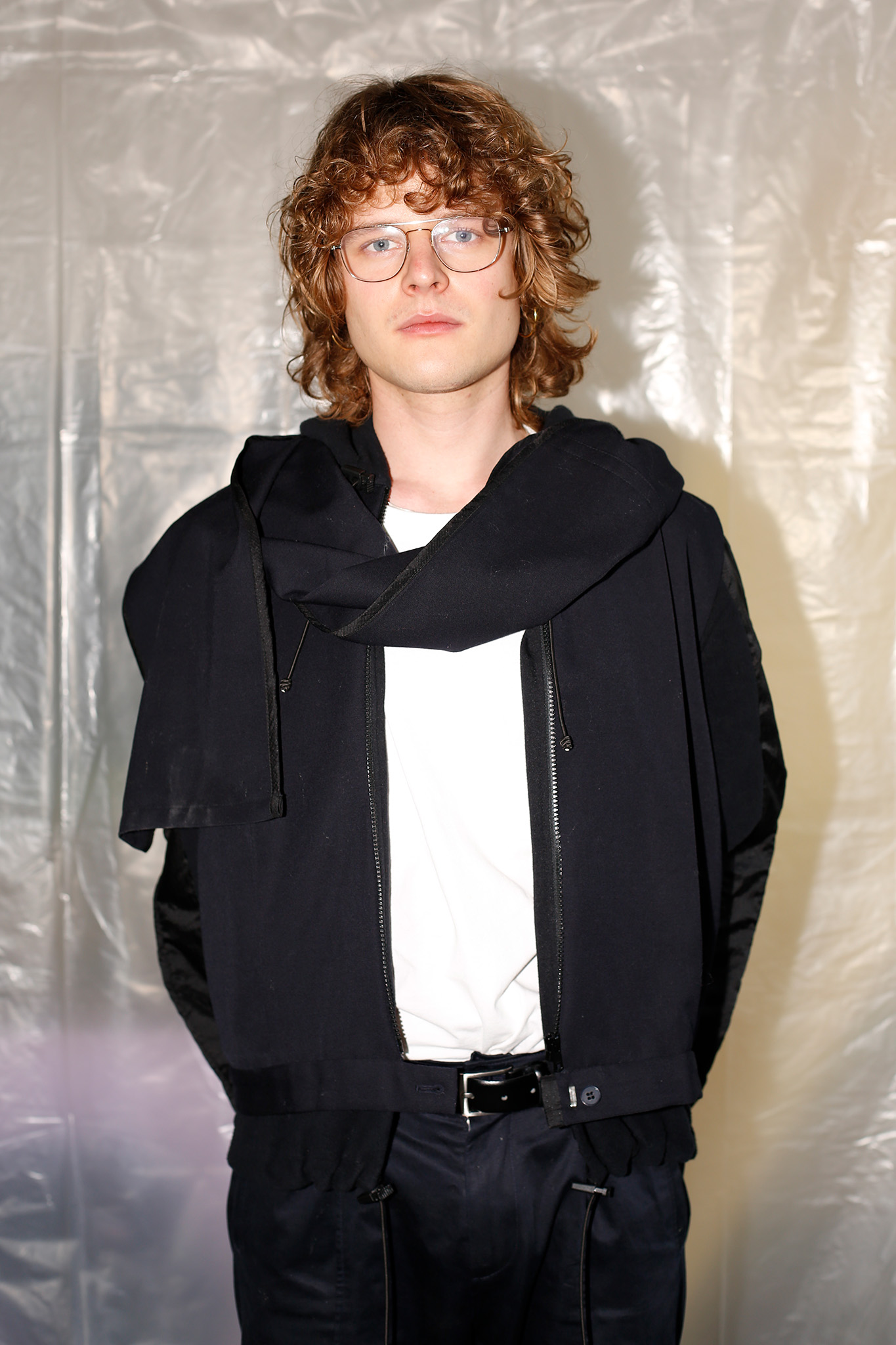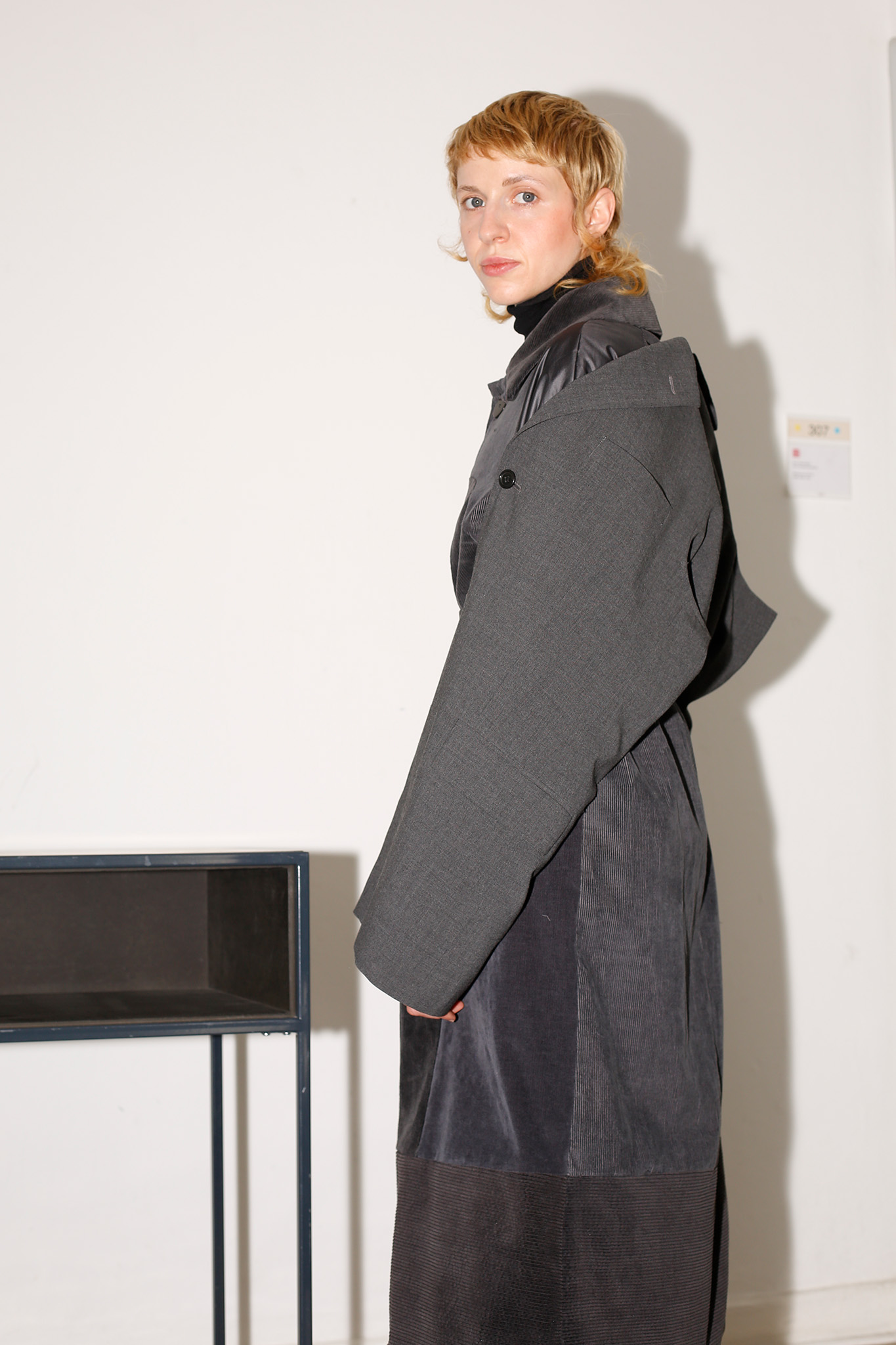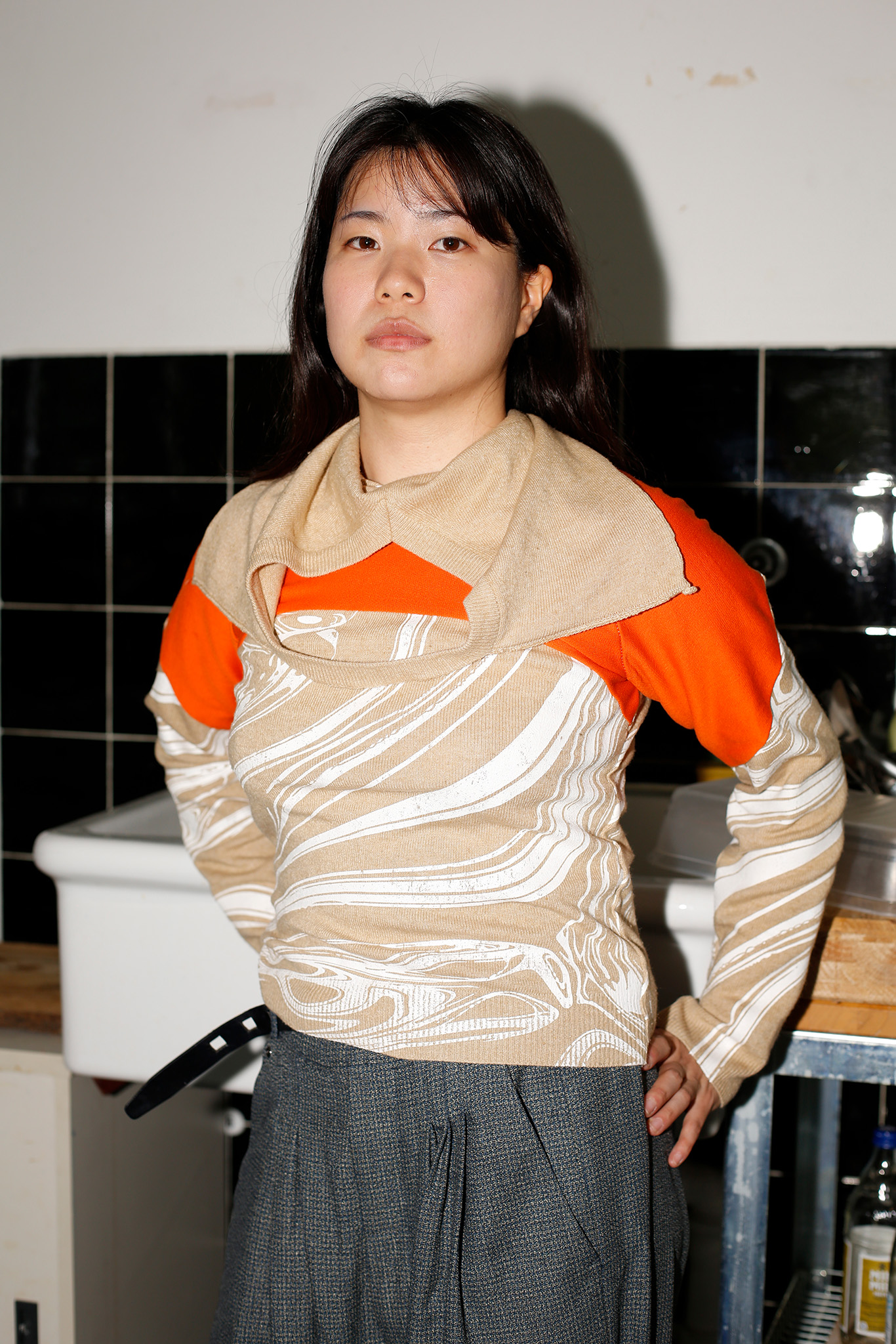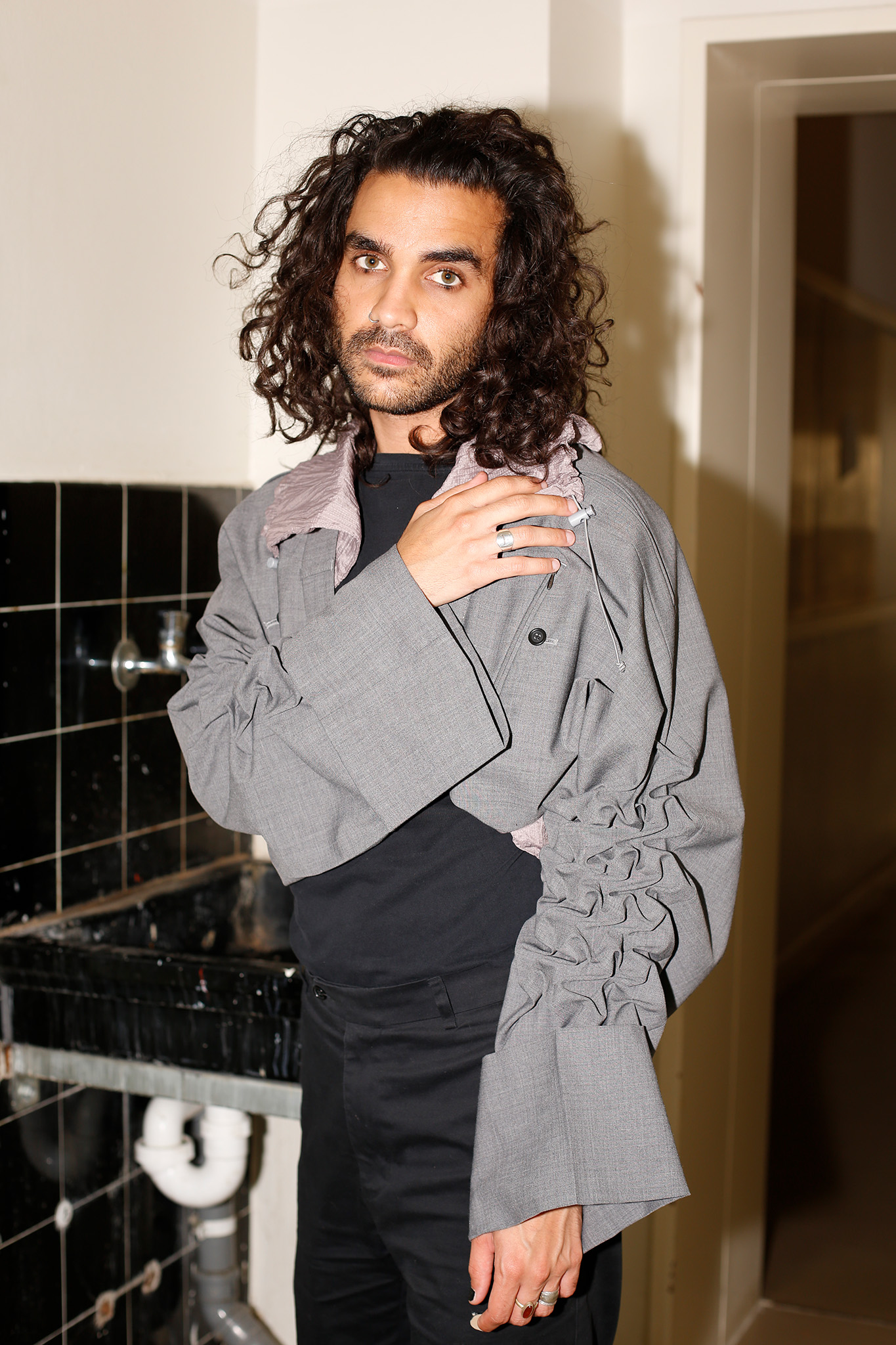To Whom It May Concern – Futurized Outerwear | Nina Birri | 2021
To Whom It May Concern – Futurized Outerwear
Sowohl die Aufregung des Neuen als auch der Komfort und die Nostalgie des Alten sind tief verankerte Dynamiken der Mode. Für dieses Master Projekt bin ich die Beziehung zwischen alt und neu im Kontext von Upcycling und dem Wiederverwenden von Alttextilien angegangen. Was passiert auf ästhetischer, sinnlicher, konzeptueller und materieller Ebene, wenn alte Kleider physisch in etwas Neues transformiert werden?
Mein Ziel war es, verschiedene Entwurfsstrategien und -techniken auszuprobieren und sie anschließend aus verschiedenen Perspektiven zu evaluieren: Gestalterisches Potential und Begehrlichkeit des Entwurfs, Standardisierungspotential, Abfallreduktion, etc. Dabei standen die Altkleider im Zentrum des Entwurfs und haben ihn maßgeblich beeinflusst. Was ist das formale Potential der Altkleidung? Wie kann ich nutzen was schon da ist, um für den Zeitgeist relevante Produkte zu entwerfen?
Die Metamorphose der Altkleider geschah über Drapage, Konstruktion, Materialbearbeitung und Verarbeitung. Nostalgische Elemente der Kleidung selbst sowie traditionelles Handwerk treffen auf futuristische Formen und Verarbeitungstechniken aus dem Bereich der Funktionsbekleidung. Die Altkleider wurden durch nachhaltige Materialien ergänzt, um einen ästhetischen Kontrast zu schaffen, und um mehr Freiheit in der Gestaltung und Produktion zu bekommen.
To Whom It May Concern – Futurized Outerwear
Both the excitement of newness and the comfort of nostalgia are deeply rooted dynamics of fashion. For my MA project I’m exploring this relationship in the context of upcycling and repurposing discarded textiles. What happens aesthetically, sensually and conceptually when old garments are physically transformed into something new?
My goal was to try out different design strategies and techniques and to evaluate them in terms of various perspectives such as design and desirability, potential to standardise for production, waste reduction, etc.
In the design process, I started off with the given material, making use of the formal potential of discarded garments and their features. How can I use what’s already there while still creating something relevant for today’s zeitgeist?
In order to transform old textiles, I sent them through a metamorphosis of draping, fabric manipulation, and finishing. Nostalgic elements of the garments and traditional handcraft are updated with futuristic shapes and finishing techniques, influenced by sports- and functional wear. The discarded textiles are complimented with sustainably sourced fabrics in order to create contrast and allow for more freedom in terms of design and production.
The result is a series of overgarments for all genders that are both desirable and wearable.
Betreuer*innen : PROF. VALESKA SCHMIDT-THOMSEN, PROF. INEKE HANS, GAST PROF. FRANZISKA SCHREIBER
Credits:
Lookbook
Fotografin: Honi Ryan , https://www.honiryan.net/
Modell: Elisabeth Bauer
H&M: Vi Nghiem Tuong
Assistenz: Saara Kaatra
Friends
Fotografin: Honi Ryan , https://www.honiryan.net/
Modelle: Youjung Kim , Paula Keilholz, Julius Führer, Jonathan James
Abi Tariq:
